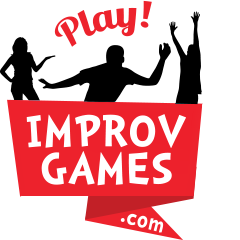Quick Description
This puzzle activity is easy to run. Have the participants get into pairs. Each pair is given a child’s puzzle and a blind fold. Player A puts on the Blindfold and Player B provides instructions for Player A to put the puzzle together.
How to Play
Have the participants get into pairs.
Each pair is given a simple child’s puzzle and a blind fold.
Ask each pair to look at the puzzle and the design. Then remove the pieces and from the puzzle and set them randomly next to the puzzle board for frame.
Explain that as a team of 2 they will put the puzzle back together. They will have 4 minutes for the task.
Explain to Player A that they will be blindfolded and can not speak (which includes questions).
Explain to Player B they will provide verbal instructions for putting the puzzle together but can not touch the puzzle pieces.
When the blindfold is on and the teams are ready. Start the activity and the timer.
Equipment Needed:
A few simple puzzles with trays. They should have 9 to 11 pieces and have clear images instead of abstract images. Have enough tray puzzles so that each group of 2 will have one.
Blind folds or bandana’s. A timer.

Notes
It is not a competition but some people may have felt is was implied because there were multiple teams. This could be a valuable conversation for teams that have to compete sometimes and collaboration other times. Explore the nature of competition and success.
This activity reminds me of a Thiagi game focused on debriefing called Watchers and Workers. (Find it here.)
Variations
Have the person putting together the puzzle ask questions.
Make it competitive by putting a time limit on completing the puzzle or awarding a prize to the first one to complete the puzzle.
Applied Improvisation Notes:
This activity needs a bit of upfront framing to reassure the participants it will be relevant to the learning objective of the workshop.
Sometimes if you explain everything about the activity before it starts, you miss out on a experience of discovery. It may be helpful to remind them of the learning objective of the day and promise them that it will connect after the activity.
Debrief as necessary.
One debrief strategy I like to use with business teams, is to ask, “how do we adjust the rules of this game to be more like the way your team functions?”
It can be helpful to do the new version of the game instead of just talking about it.
The other useful followup debrief question is, “how do we adjust the rules of this game to make it the way we want our team to function?”
Sometimes the group won’t suggest anything. If that happens it’s your choice to move on or explore it more.
Origin
I learned this activity from Sue Walden. Find her on the web here.

Get the Playbook so you have hundreds of games in your pocket when you need them.
